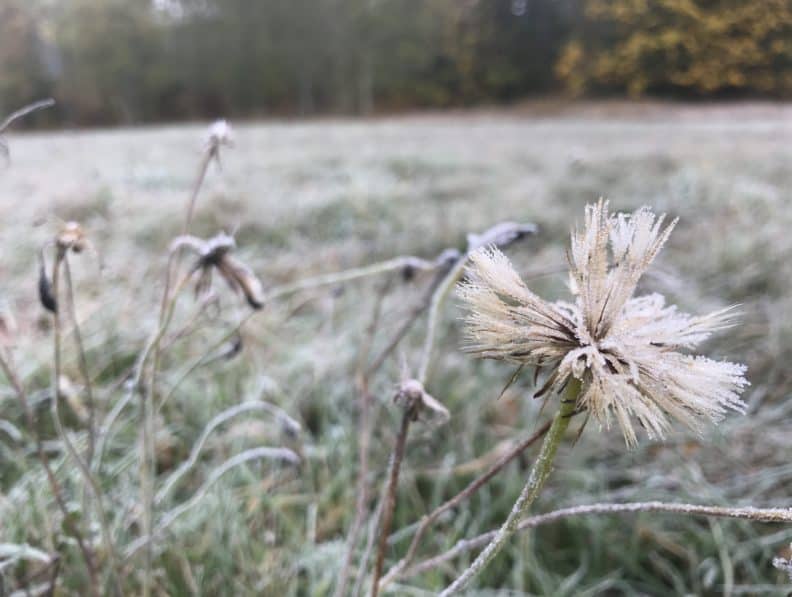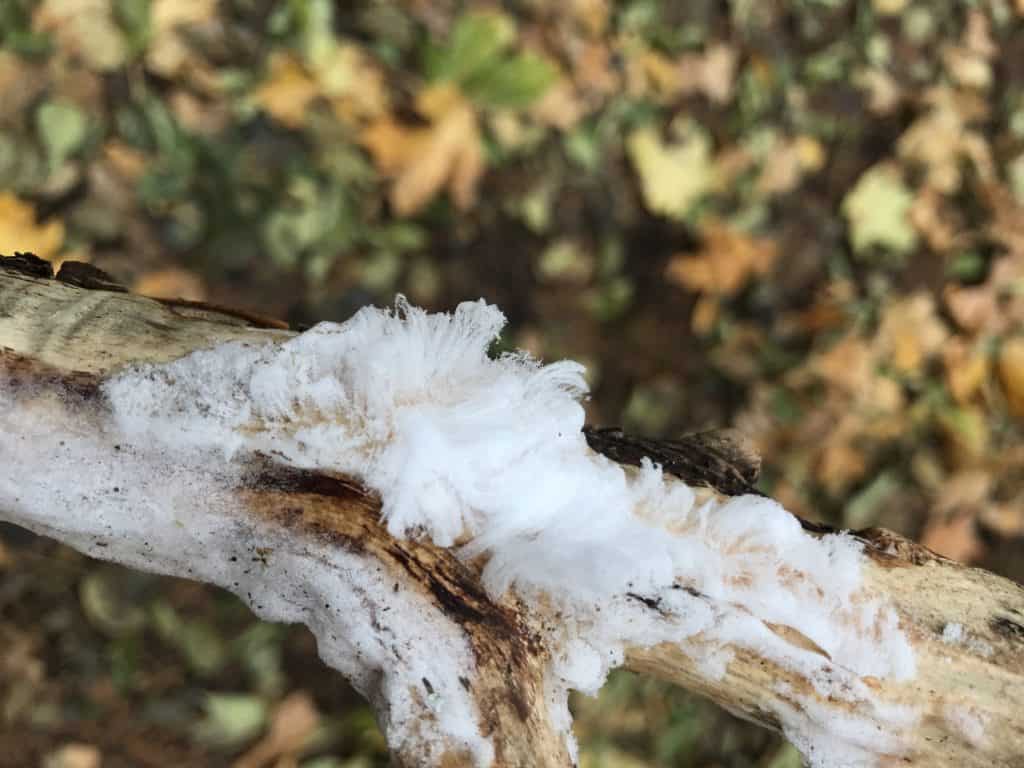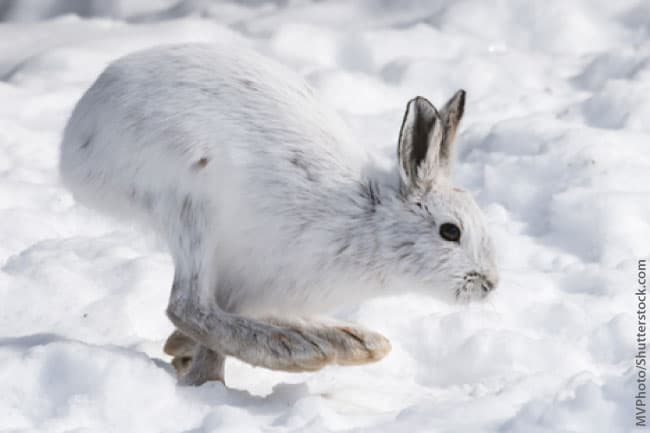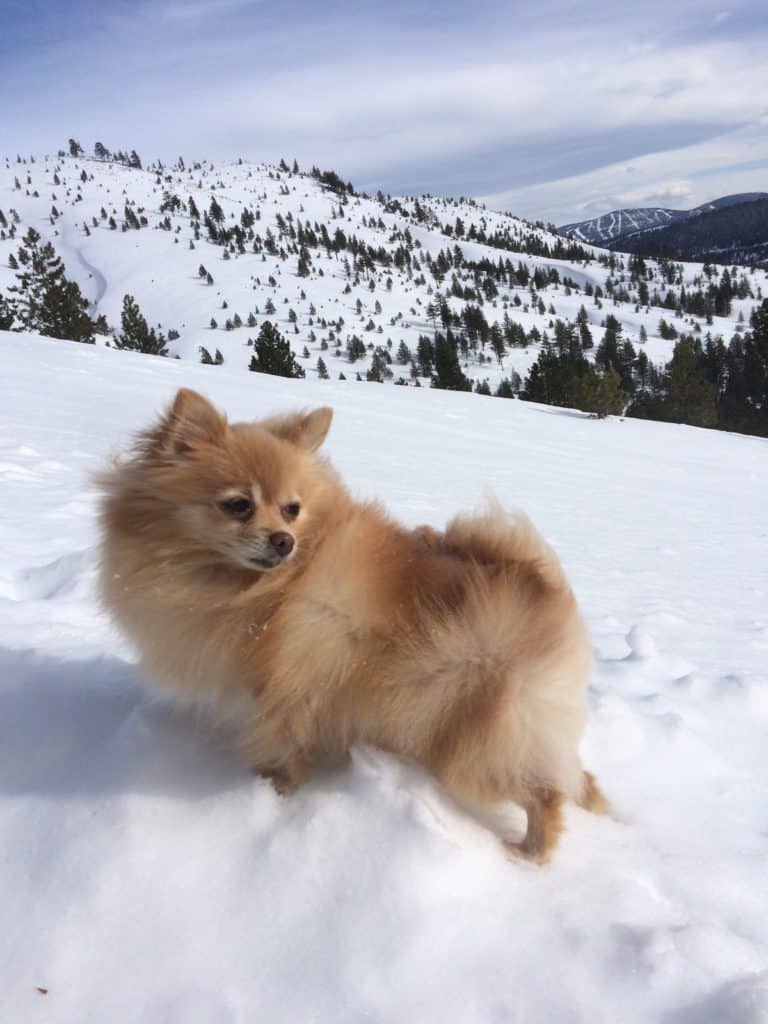
Snow: Embracing the Unknown
This Naturalist Note is written by graduate student Amy Sanchez, as part of the Fall Natural History Project in North Cascades Institute’s M.Ed. Residency coursework. You can view other students’ work here.
November 3, 2017 was the first day we saw snow falling at the Environmental Learning Center. The large snowflakes fell in intermittent flurries as we sat inside of Trillium listening to Natural History presentations by members of the 17th graduate cohort. I had presented the day before, and after what had admittedly been a nerve-wracking presentation, I now watched the snow gently cascade over our home, giving me a sense of excitement and comfort. I was greeted by a new friend.
I grew up in North Hollywood, California, a city nestled in the San Fernando Valley surrounded by the Transverse Ranges. Despite living so close to a mountain range that certainly receives annual snow, I didn’t get to know snow the way that I knew the far-reaching freeways of Southern California. The few interactions I had with snow in my childhood were brief and infrequent. My impressions of it did not go beyond seeing it as a magical entity found in landscapes far away from what I knew as home.

Before moving to Washington to start the M.Ed. Graduate Program with the North Cascades Institute, I lived in Davis, California. Summers in Davis often provided heat waves where temperatures reached over 100°F and winter low temperatures averaged at about 32°F. Known as one of the most bike-friendly cities in the United States, largely due to how flat it is, Davis is no better a candidate for snow production than Los Angeles. Aside from an occasional notable frost, I once again found myself living in a valley that put me just out of reach from learning what life in the snow is like. So, for twenty-seven years, my interactions with snow consisted of day-long romps that ended with a two-hour drive home to a more temperate environment.
But now, I find myself living in the North Cascades; a gorgeous, seemingly never-ending range of mountains that receive an average of 407 inches of snowfall annually. And while I did my best to prepare for colder temperatures by stocking up on as much winter gear during post-season sales this past January, (base layer donations will happily be accepted), I couldn’t help but shake the anxiety brought on by my unfamiliarity with winter environments. So, as I pondered what I wanted to dedicate three weeks of our Natural History course to, I decided to face my nerves and get to know snow.

Joshua Porter, the ever-patient listener of Institute grad students, sat me down outside of the Skalitude Retreat lodge to discuss the very vague and jumbled thoughts I had on my natural history project. After a whole lot of rambling, Joshua asked in his most patient tone if I knew what snow was. I paused, thinking that I must be stating the obvious, and with slight trepidation offered up the response, “Frozen water?” He shook his head, and calmly blew my mind by informing me that it was not in fact frozen water, but a mineral.
Realizing how little I know about snow, I hit the books and ended up with a wide array of lenses through which to get to know snow. As I read and re-read sections on crystal formation, snow accumulation, and adaptations that organisms have developed to survive life in the snow, my head spun with each attempt to synthesize all of this new information into a 10-page paper. But I did! And now I would like to share a little bit about what I learned from animals who neither migrate, nor hibernate, but instead as Peter Marchand likes to put it, resist.
While I love the dramatic flair that Marchand imbued in his writing, I like to think that the following three animals decided rather to get to know snow and live at peace with the nivean environment. (Cue the cringing of every evolutionary biology teacher that I have ever had.) Perhaps deer mice, snowshoe hares, and ermines don’t grasp tiny fragments of snow crystals in their paws and dance around in a circle to celebrate winter, but they have become heavily dependent on various characteristics and behaviors of snow to survive the harsh environment. Falling snow, snow on the ground, and surface generated ice, are three classifications of snow that are commonly used in snow ecology. Of the three, snow on the ground, also known as the snowpack, is the most critical to winter survival.

Deer mice utilize what is known as the subnivean layer, a space that is created between the ground and the snowpack above it. While it may be hard to believe, snow has great insulating properties that allow deer mice to survive freezing temperatures. The tunnels also allow them to access food, such as exposed tree bark beneath the snowpack, while simultaneously providing protection from predators.

Snowshoe hares on the other hand, utilize what is known as the supranivean layer, the surface of the snowpack. Their large feet and densely furred feet gives them a low foot load, and allows them to move above the snowpack far more easily than animals with a higher foot load. This gives them an advantage when trying to avoid predators, as well as when trying to access food. Their thicker winter coats help them stay warm.

Ermines are the last of the three species that I looked at, and are arguably one of the oddest animals to remain active in the winter. Their small, slender bodies and their inability to store sufficient fat in the winter make them unlikely candidates for winter life. However, they too don a thick winter coat and are apt at taking advantage of the subnivean layer. While they do not make their own home out of the snowpack, they are great at making a home out of their prey’s subnivean burrows.
While I may not have the ability to transform into a winter adapted animal, (Because that is not how evolution works! See?! I do understand evolution!), learning about the complexity of snow ecology and the various successful winter critters gave me a new perspective on winter in the North Cascades. Hopefully I can soon be on Washington Pass embracing the snow.


